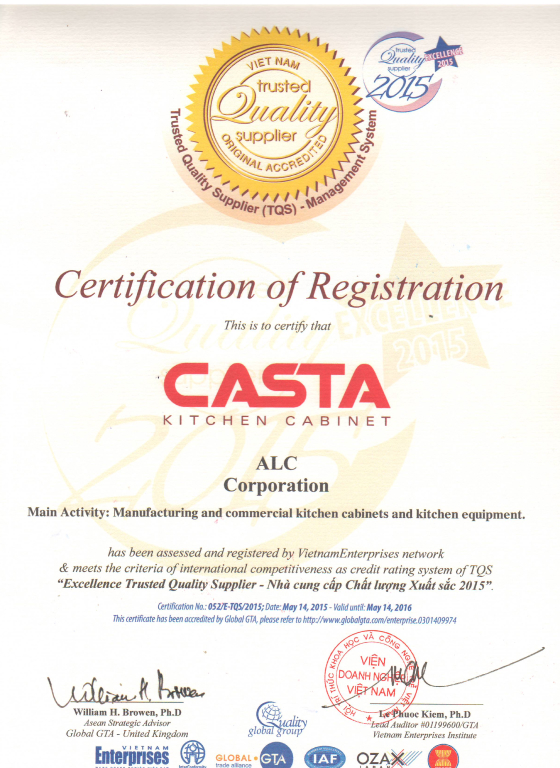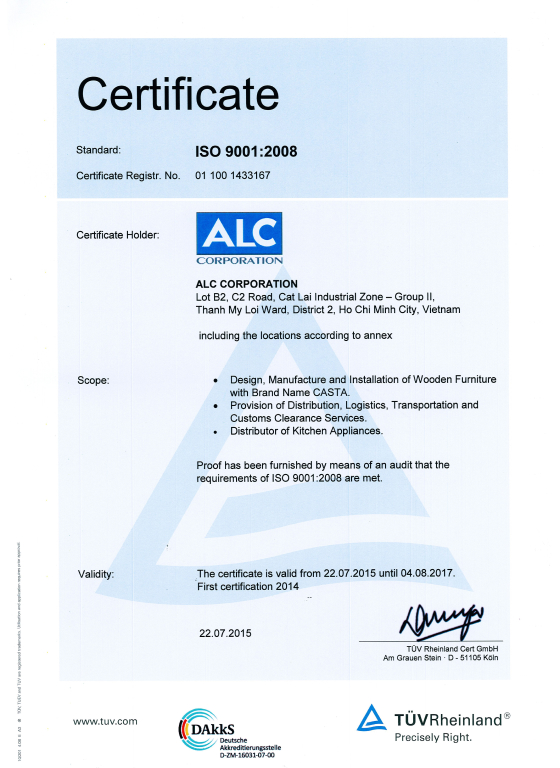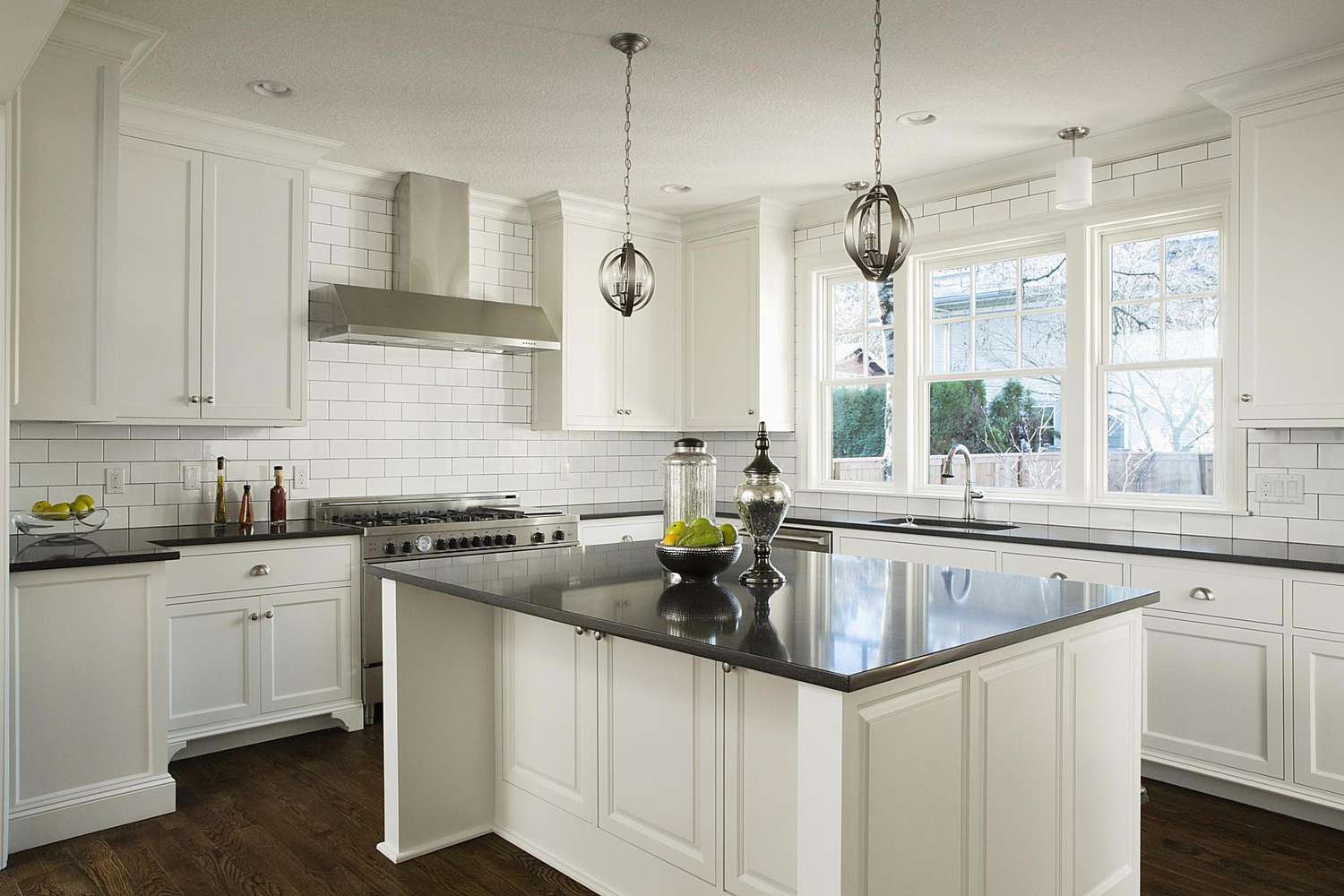The cabinet manufacturing industry is evolving rapidly, with the global market expected to hit $200 billion by 2025. Contractors and brands now choose between manufactured cabinets—mass-produced for consistent quality and quick turnaround—and shop-made cabinetry, which offers bespoke designs and premium materials for luxury projects. The right choice, based on factors like material quality, customization, and production time, can even cut costs by up to 30%.
Understanding the nuances between these options is essential for contractors, cabinet and furniture brands, and companies aiming to deliver quality and value to their clients.
Table of Contents
1. Market Analysis: Cabinet Manufacturing by the Numbers
1.1 Global Cabinet Manufacturing & Demand Trends
The demand for manufactured cabinets continues to rise, driven by increased residential construction, home renovations, and commercial real estate projects.
The global cabinet market is projected to grow from $137.54 billion in 2025 to $173.54 billion by 2030, with a Compound Annual Growth Rate (CAGR) of 4.76%.
This growth is fueled by the rising adoption of Ready-to-Assemble (RTA) cabinets, demand for eco-friendly materials, and advances in automated cabinet manufacturing.
- North America accounts for a significant share of cabinet manufacturing, with the U.S. leading in high-quality production.
- Asia-Pacific, particularly China and Vietnam, dominates the manufactured cabinets market due to large-scale production capabilities and cost-effective labor.
- The shift toward sustainable materials and low-VOC finishes is influencing buying decisions in European and North American markets.
Learn more: Vietnam vs China Cabinet Manufacturers - A Comparative Analysis
1.2 Cost Comparison: Manufactured vs. Shop-Made Cabinets
One of the biggest factors influencing a cabinet buyer's decision is the cost difference between manufactured cabinets and shop-made cabinetry.
While custom, handcrafted cabinets are often viewed as premium, advancements in cabinet manufacturing have allowed pre-manufactured cabinets to offer quality at a fraction of the cost.
| Factor | Manufactured Cabinets | Shop-Made Cabinetry |
| Cost per Linear Foot | $100–$500 | $500–$1,200 |
| Customization | Limited | High |
| Lead Time | 3–6 weeks | 6–12 weeks |
| Labor Costs | Lower | Higher |
| Material Options | Standardized | Fully Customizable |
| Quality Consistency | High | Variable |
- Manufactured cabinets are produced in large-scale factories using advanced CNC machinery, ensuring consistent quality and faster turnaround times.
- Shop-made cabinetry is handcrafted, offering greater design flexibility, but requires more time and comes at a higher price point due to labor-intensive production.
Learn more: Understanding the Cost of Custom Cabinetry
1.3 Speed & Efficiency in Cabinet Manufacturing
Speed is a critical factor when choosing between pre-manufactured cabinets and custom-built cabinetry.
- Manufactured Cabinets: Typically ready for shipping in 3–6 weeks, making them ideal for contractors and developers with tight deadlines.
- Shop-Made Cabinetry: Requires 6–12 weeks due to extensive customization, hand-finishing, and the longer labor-intensive process.
- RTA Cabinets: Offer the fastest turnaround, with some RTA cabinet manufacturers delivering within 2–4 weeks.
2. Manufactured Cabinets: Pros and Cons
2.1 What Are Manufactured Cabinets?
Manufactured cabinets, also known as prefabricated cabinets, are mass-produced in factory settings using automated machinery and standardized designs.
Unlike custom-made cabinetry, these cabinets are available in set sizes, materials, and finishes, making them a cost-effective and time-efficient option for large-scale projects.
With technological advancements, modern manufactured cabinets offer improved durability, a wide range of design options, and eco-friendly materials that comply with industry standards.
These cabinets are popular among contractors, developers, and cabinet brands looking for reliable, high-volume production solutions.
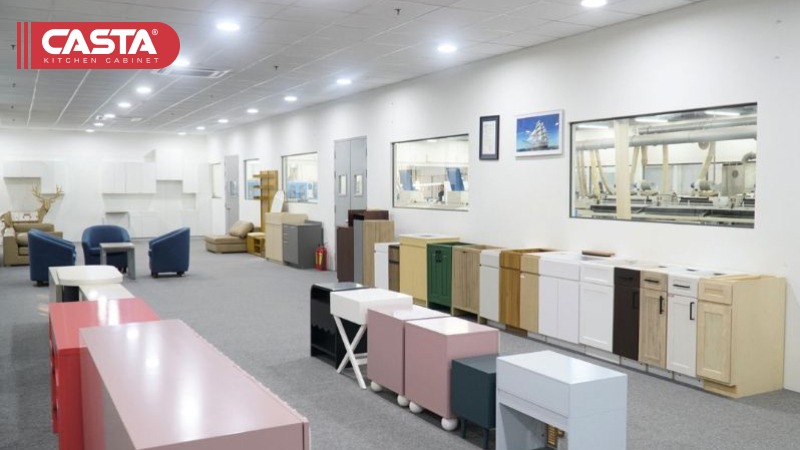
Learn more: What are rta cabinets?
2.2 Benefits of Manufactured Cabinets
- Cost-Effective Production: The use of automated manufacturing processes significantly lowers labor costs and material waste, making manufactured cabinets an affordable option compared to fully custom-built cabinetry. Bulk purchasing also reduces per-unit costs, making it an attractive choice for contractors and developers.
- Consistent Quality and Precision: Since manufactured cabinets are produced using CNC machinery and robotic automation, they maintain uniformity in sizing, finishes, and construction. This precision reduces the likelihood of errors, ensuring reliable results in large-scale projects.
- Faster Lead Times: Unlike shop-made cabinets, which require longer crafting periods, manufactured cabinets typically have lead times of 3–6 weeks. This fast production cycle makes them ideal for projects with tight deadlines.
- Scalability for Large Projects: Manufactured cabinets can be produced in large quantities without compromising quality. This makes them well-suited for commercial buildings, multi-unit housing developments, and large-scale renovation projects.
- Eco-Friendly Options: Many manufacturers use sustainable materials such as CARB-compliant plywood or MDF with low formaldehyde emissions, meeting international environmental regulations.
Learn more: Formaldehyde free cabinets
2.3 Disadvantages of Manufactured Cabinets
- Limited Customization: While some manufacturers offer a range of finishes and door styles, the overall design flexibility is lower than that of custom-built cabinetry. Manufactured cabinets come in pre-set sizes, which may not be suitable for unique layouts or highly specific design needs.
- Material Restrictions: Budget-friendly manufactured cabinets often use MDF, particleboard, or laminate, which may not match the durability of high-quality hardwood used in shop-made cabinets. Although premium options exist, they tend to be more expensive.
Learn more: Difference between mdf and mfc vs plywood vs hdf
- Design Limitations: Unlike custom cabinets that allow for tailored dimensions, manufactured cabinets are built based on industry-standard sizes. This can sometimes lead to gaps or the need for filler pieces in non-standard kitchen layouts.
- Potential Shipping Costs: While manufactured cabinets offer cost savings on production, shipping expenses can add to the total cost, especially for large orders or international shipments.
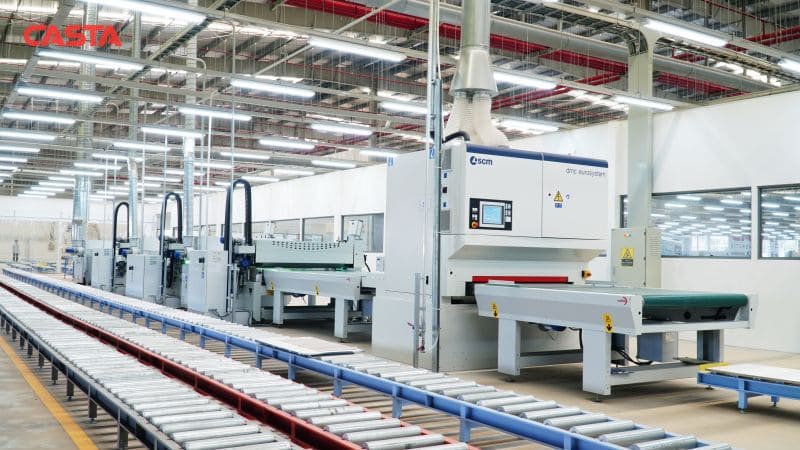
3. Shop-Made Cabinetry: Pros and Cons
3.1 What is Shop-Made Cabinetry?
Shop-made cabinetry, also known as custom-built cabinets, refers to cabinets handcrafted by skilled artisans in local workshops rather than mass-produced in factories.
Unlike manufactured cabinets, which are produced in standardized sizes, shop-made cabinetry is tailored to individual specifications, allowing complete flexibility in design, materials, and construction methods.
These cabinets are popular among homeowners, interior designers, and high-end contractors who seek one-of-a-kind, premium-quality cabinetry for residential or commercial projects.
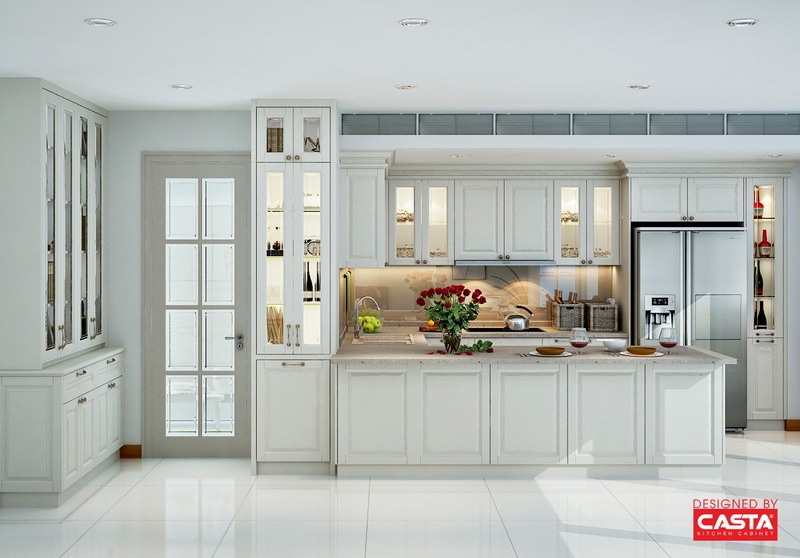
Learn more: What are custom cabinets?
3.2 Benefits of Shop-Made Cabinetry
- Fully Customizable Design: Unlike pre-manufactured cabinets, shop-made cabinetry offers endless possibilities in terms of dimensions, materials, finishes, and hardware. This makes it ideal for unique layouts, luxury homes, and specialized storage solutions.
- High-Quality Craftsmanship: Because each cabinet is built by hand, shop-made cabinets often exhibit superior attention to detail, intricate joinery, and high-end finishes. Many artisans use solid wood and premium-grade plywood to ensure durability and longevity.
- Adaptability for Non-Standard Spaces: Custom cabinets can be designed to fit irregular or unconventional layouts, maximizing storage and functionality. This is particularly beneficial for historical homes, compact apartments, or commercial projects with specific design requirements.
- Exclusive Material Selection: Shop-made cabinetry allows clients to choose from a wider variety of materials, including rare wood species, custom veneers, and specialty finishes that may not be available in manufactured cabinets.
- Personalized Service: Working with local craftsmen or cabinet shops provides direct communication and oversight, ensuring that the final product aligns with the client's vision.
Learn more: Leading kitchen cabinet manufacturers
3.3 Disadvantages of Shop-Made Cabinetry
- Higher Costs: Custom craftsmanship comes at a premium price, with shop-made cabinets typically costing more than pre-manufactured cabinets due to labor-intensive construction and the use of high-end materials. Costs can be two to three times higher than mass-produced alternatives.
Learn more: How much is custom cabinetry?
- Longer Lead Times: Unlike manufactured cabinets, which can be ready for shipping within weeks, shop-made cabinetry often requires 6–12 weeks for production. This extended timeline can pose challenges for time-sensitive renovation projects.
- Variable Quality: Since shop-made cabinets rely on individual craftsmanship, quality can vary depending on the experience and skill of the cabinet maker. Selecting a reputable shop is crucial to ensuring high standards in construction and finishing.
- Limited Scalability for Bulk Orders: Custom cabinet shops may not be able to accommodate high-volume orders, making them less practical for large-scale commercial projects or contractors needing bulk quantities of manufactured cabinets.
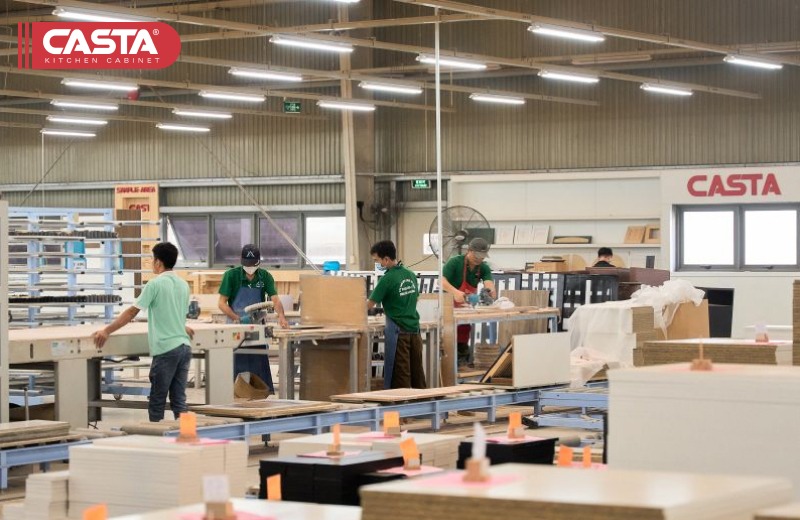
4. Which Cabinet Type is Best for Contractors and Brands?
Selecting the right cabinetry is critical for achieving both design excellence and operational efficiency.
The decision largely depends on project scale, budget constraints, turnaround time, and the desired level of customization.
This detailed guide helps contractors and brands determine whether manufactured cabinets or shop-made cabinetry best meet their project needs, while also exploring current industry trends.
4.1 Who Should Choose Manufactured Cabinets?
Manufactured cabinets are ideal for projects that require a balance between affordability, consistency, and speed. They are produced in large volumes, ensuring uniform quality and standard dimensions that help streamline installations.
This option is best suited for:
- Contractors Working on Large-Scale Projects:
Whether it’s hotels, apartment complexes, or commercial spaces, contractors benefit from the efficiency of manufactured cabinets. The consistent quality and quick installation process make them a reliable choice for projects where uniformity and timely completion are essential.
- Brands Needing Consistency for Retail or Franchise Expansions:
For businesses expanding across multiple locations, maintaining a consistent aesthetic is crucial. Manufactured cabinets offer standardized designs and finishes that ensure a unified brand look across retail outlets or franchise sites.
- Businesses Looking for Quick Turnaround and Cost Savings:
Projects with tight deadlines and limited budgets find manufactured cabinets attractive due to their cost-effective production methods. The mass production process not only reduces material and labor costs but also accelerates delivery times, helping projects stay on schedule.
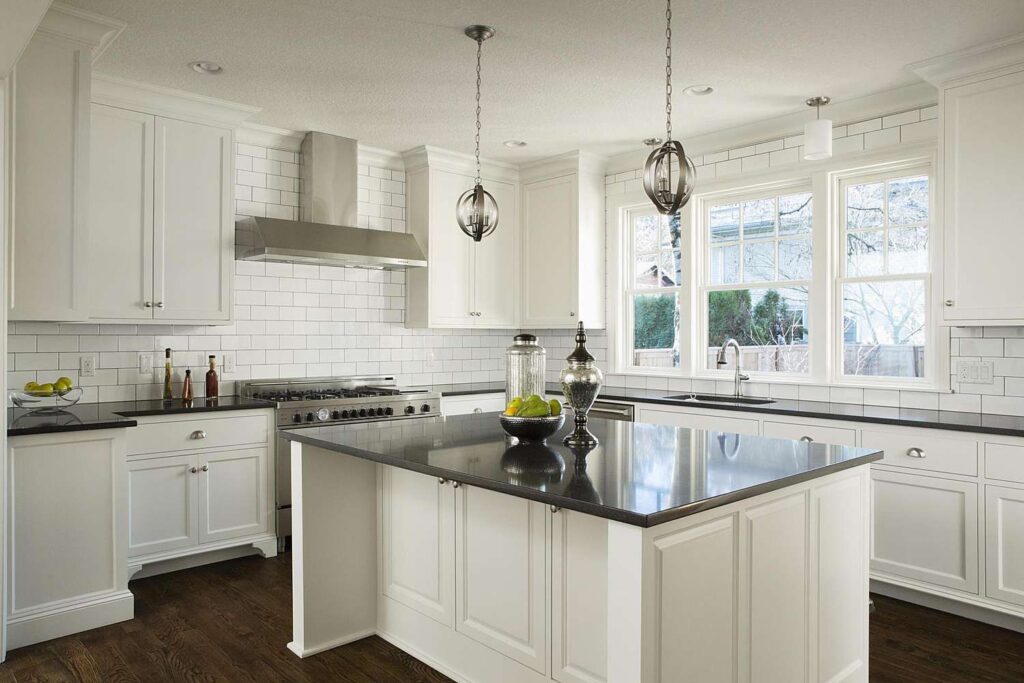
Learn more: Top ready to assemble furniture manufacturers
4.2 Who Should Choose Shop-Made Cabinetry?
Although shop-made cabinetry requires a higher investment and a longer lead time, the result is unparalleled quality and a design that is truly exclusive. Shop-made cabinetry stands out for its unique design and exceptional craftsmanship. Crafted by skilled artisans in local workshops, these custom-made cabinets offer unparalleled personalization.
They are best suited for:
- Luxury Home Builders Needing One-of-a-Kind Designs:
High-end residential projects demand a level of sophistication and bespoke detail that only shop-made cabinetry can provide. Luxury home builders often opt for these custom solutions to create distinctive, high-quality interiors that reflect individual taste and exclusivity.
- Custom Furniture Brands Specializing in High-End, Handcrafted Products:
Brands that emphasize unique, artisanal products benefit significantly from shop-made cabinetry. By leveraging expert craftsmanship and customizable design options, these brands can offer signature pieces that set them apart in competitive markets.
- Clients Prioritizing Artisan Craftsmanship Over Cost and Time Efficiency:
When the focus is on exceptional quality and personalized design, clients are often willing to invest more time and money. Shop-made cabinetry caters to those who value meticulous workmanship, unique detailing, and the artistry of handcrafted products over the rapid delivery and lower costs associated with mass-produced options.
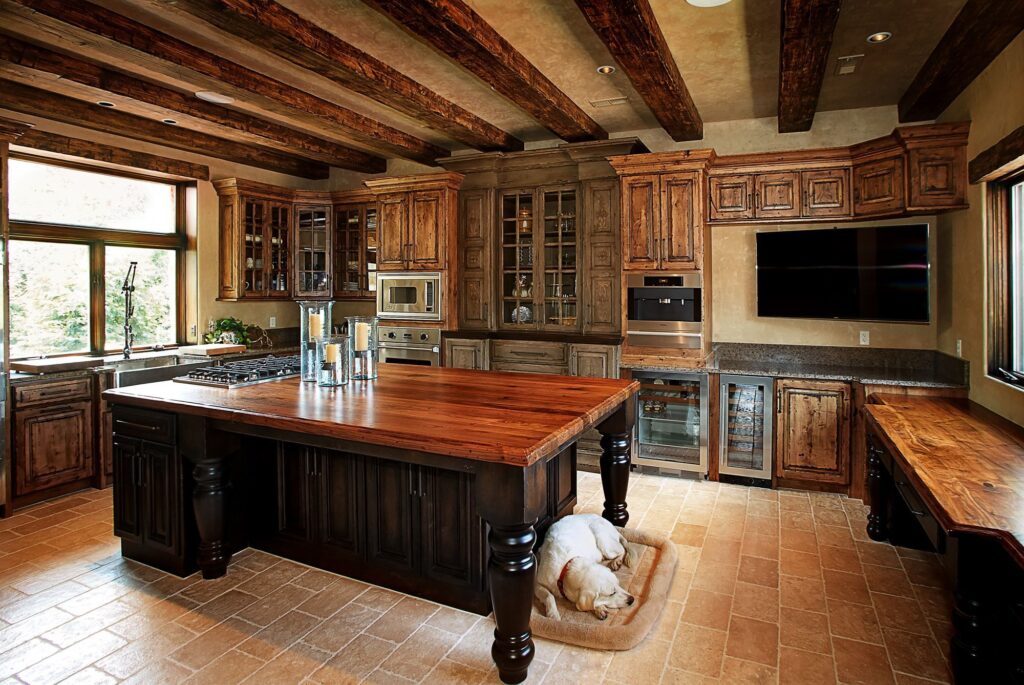
Learn more: Sourcing Cabinets and Furniture from Vietnam: Your Ultimate Guide
4.3 Industry Trends: The Shift Towards Pre-Manufactured Cabinets
The cabinetry industry is experiencing significant changes driven by various market trends that are shaping consumer preferences and production practices:
- Rising Labor Costs:
With increasing labor expenses, manufacturers are leaning towards mass production methods. This trend makes manufactured cabinets more economically attractive, as large-scale production helps control costs and maintain competitive pricing.
- Technological Advancements:
Innovations in machinery and design software have transformed the capabilities of manufactured cabinets. Today’s technologies allow for greater customization even within mass production, enabling manufacturers to offer more tailored options without compromising on efficiency.
- Sustainability Concerns:
Environmental awareness is prompting manufacturers to adopt eco-friendly materials and sustainable practices. The use of renewable resources and energy-efficient production processes is becoming a key selling point, appealing to clients who prioritize green building practices.
Learn more: Material & Finish Innovations: Elevating Cabinet Design and Durability
By understanding the specific advantages of manufactured cabinets and shop-made cabinetry, as well as keeping an eye on evolving industry trends, contractors and brands can make well-informed decisions that align with their project requirements and strategic goals.
5. Vietnam vs. China: Which Country Offers the Best Manufactured Cabinets?
The global cabinetry market is highly competitive, with Vietnam and China emerging as two major manufacturing powerhouses.
Here’s an in-depth comparison focusing on cost and production efficiency, trade and compliance advantages, and why Casta Cabinetry stands out as a superior option.
5.1 Cost and Production Efficiency
When comparing key production factors, Vietnam and China differ on several important metrics:
| Factor | Vietnam | China |
| Labor Costs | 40% lower | Higher |
| Lead Time | 25–40 days | 30–45 days |
| Material Quality | High | High |
| Export Tariffs | Lower | Higher |
- Labor Costs:
Vietnamese labor costs are approximately 40% lower than those in China. This significant cost saving is passed on to clients, making large-scale projects more budget-friendly without compromising quality. - Lead Time:
Production in Vietnam typically requires 25 to 40 days, compared to 30 to 45 days in China. Faster lead times are crucial for meeting tight project deadlines and ensuring efficient supply chain management. - Export Tariffs:
With lower export tariffs, Vietnamese manufacturers offer additional cost advantages. These reduced tariffs help keep overall costs down for projects, especially in markets such as the U.S. and Europe.
Learn more: Vietnam vs China Cabinet Manufacturers: A Comparative Analysis
5.2 Trade & Compliance Advantages
Vietnamese manufacturers benefit from several trade-related advantages:
- Fewer U.S. Import Tariffs:
Manufacturers in Vietnam face lower U.S. import tariffs compared to their Chinese counterparts, translating into more competitive pricing for international buyers:
- European Manufacturing Technology:
The integration of European manufacturing techniques in Vietnam ensures quality consistency. This technology not only upholds high production standards but also aligns with strict global compliance requirements.
5.3 Why Casta Cabinetry is a Strong Alternative
Casta Cabinetry leverages over 20 years of industry experience and robust OEM capabilities to deliver manufactured cabinets that are second to none.
By combining the cost-effective benefits of Vietnamese production with the precision of advanced European manufacturing, Casta ensures each product meets rigorous international quality standards.
Their proven expertise, integrated production systems, and extensive customization options make them a reliable partner for North American brands seeking premium cabinetry solutions.
Here’s why Casta is a preferred choice:
- European Precision and Innovation:
Casta Cabinetry employs advanced European manufacturing methods combined with the strategic advantages of Vietnamese production. This blend ensures exceptional accuracy, durability, and finish quality in every cabinet produced.
- Tailored Customization:
Casta’s approach emphasizes client satisfaction by offering extensive customization options. From design and finish to dimensions and hardware, every element is crafted to meet the unique requirements of each project. Their iterative design process ensures that clients receive a product that perfectly fits their vision.
Learn more: Casta’s Ideal Custom Cabinets
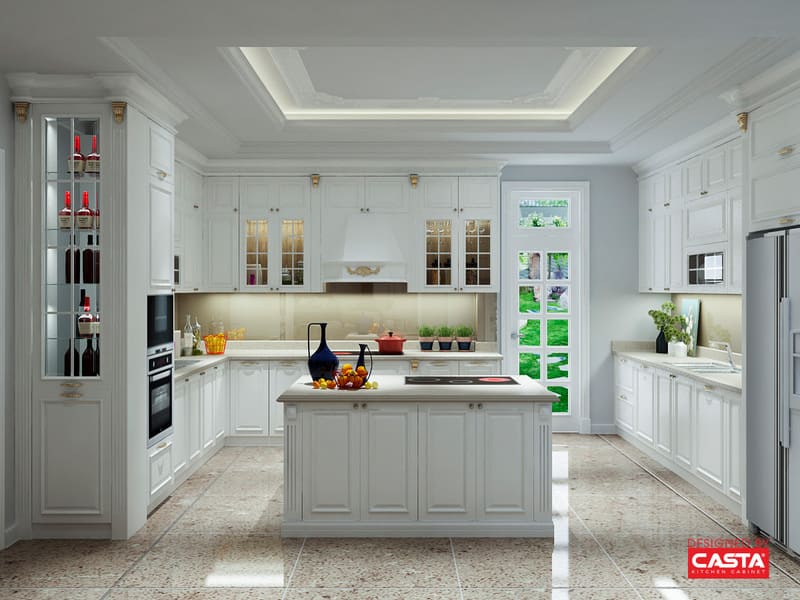
- Rigorous Quality Control:
Every cabinet produced by Casta undergoes stringent quality inspections. This commitment to excellence guarantees that each piece meets high industry standards for functionality and aesthetics.
- Industry Certifications and Environmental Commitment:
Casta Cabinetry proudly holds certifications such as CARB, FSC, and E1. These certifications not only affirm compliance with strict health and safety regulations but also reflect Casta’s dedication to sustainable and eco-friendly manufacturing practices.
- Proven Track Record in High-End Projects:
Trusted by luxury home builders and custom furniture brands alike, Casta Cabinetry consistently delivers products that combine affordability with premium quality. Their ability to merge European precision with the cost and efficiency benefits of Vietnamese production makes them an industry leader.
Learn more: Casta’s Outstanding International Projects
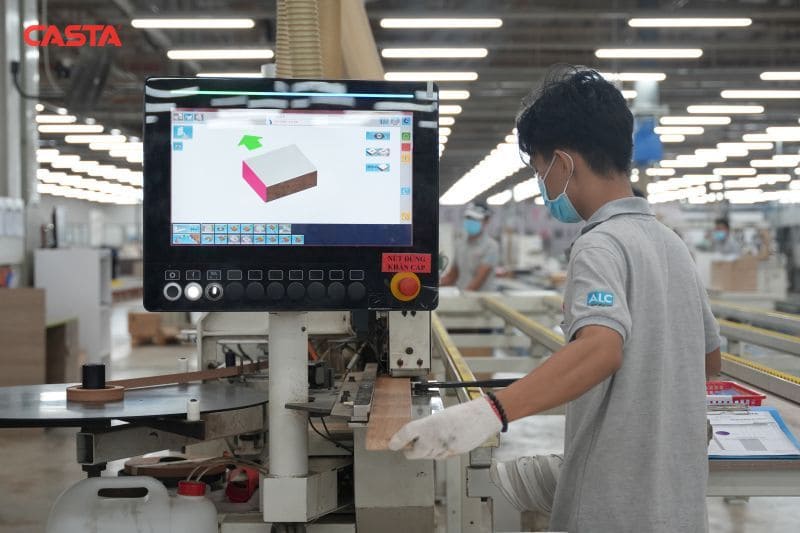
6. Making the Right Choice for Your Business
Ultimately, the choice between manufactured cabinets and shop-made cabinetry depends on your specific project needs.
Manufactured cabinets deliver cost savings, rapid production, and scalability—making them ideal for contractors, developers, and large-scale projects where efficiency and uniformity are key. On the other hand, shop-made cabinetry shines in luxury projects by offering bespoke craftsmanship, premium materials, and intricate detailing that elevate any high-end space.
Consider your budget, timeline, and overall project scale to select the cabinetry solution that best aligns with your business goals.
7. FAQ: Answering Common Questions
How do I find the best cabinet manufacturer?
What is the average cost of pre-manufactured cabinets?
Why is Vietnam emerging as a strong alternative to China?
How can I ensure the quality of my cabinetry project?
Can I customize pre-manufactured cabinets to suit my project?
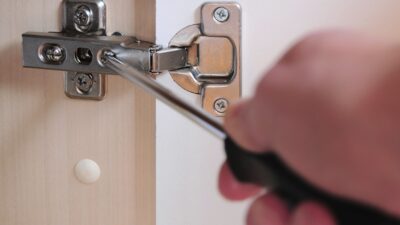
How Much Do Soft Close Cabinets Cost? 2025 Pricing Analysis ...
Soft close cabinets—equipped with hydraulic or pneumatic damping mechanisms—have become the industry standard for kitche...
06/28/2025 | David Nguyen
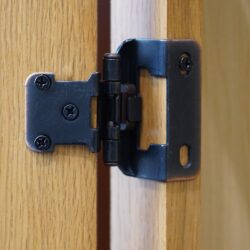
Soft Close vs Self Close Cabinet Hinges: Differences, Pros &...
Cabinet hinges play a pivotal role in the daily functionality and perceived quality of kitchen and furniture installatio...
06/26/2025 | David Nguyen
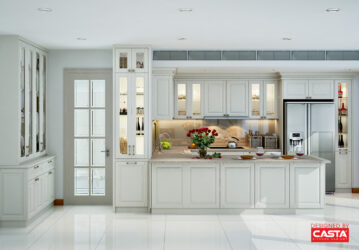
20 Glass Front Cabinet Ideas for Contractors & Kitchen C...
Glass front cabinet doors have surged in popularity across modern kitchen and cabinetry programs, offering contractors a...
06/24/2025 | David Nguyen
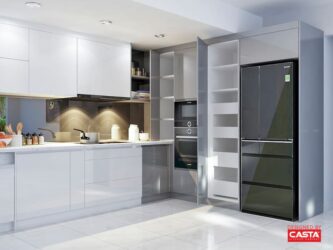
Are Hardboard Cabinets Good? Pros, Uses & Comparisons Ex...
Choosing the right kitchen cabinet materials can make or break a project’s success. Material selection influences durabi...
06/20/2025 | David Nguyen
Contact us
Casta is always ready to listen and answer all customers' questions
